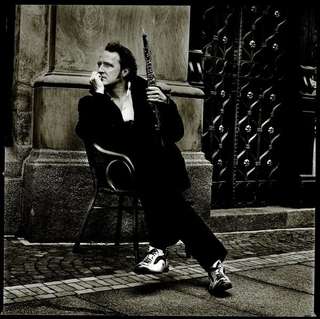|
Back
The Poet and the Oboe New York
Stern Auditorium, Carnegie Hall
12/05/2009 - & December 4, 2009 (Buffalo)
Wolfgang Amadeus Mozart: Ballet music from Idomeneo – Symphony No. 36, in C Major "Linz"
Richard Strauss Concerto for Oboe in D Major
Igor Stravinsky Eight Instrumental Miniatures
Albrecht Mayer (oboe)
Orpheus Chamber Orchestra

A. Mayer (© Mat Hennek)
The Byronic image here is no ostentation. Albrecht Mayer, First Chair oboe of the Berlin Philharmonic is not an ensemble player on a holiday. He is a poet of the first rank. Mr. Mayer’s performance last night playing that charming Strauss Oboe Concerto displayed that sense of grace, legerdemain and adventure which Lord Byron would have admired.
Of course Mr. Mayer had two advantages. Young himself, he played with the ever more youthful sounding Orpheus Chamber Orchestra. Mr. Mayer was able, not to mold, but to create a symbiosis with the orchestra, with the oboist allowed utmost flexibility.
The second advantage was the Concerto itself. With a paucity of oboe concertos since Mozart, Mr. Mayer has transcribed Bach arias (one of which he played for an encore). But this Strauss work, written two years before his death, was hardly the product of an old man. It is youthful, highly melodic, and has a slow theme which could have come from any of his operas. Two composers, Saint-Saëns and Strauss, lived genealogically far past their artistic eras. But where the former sounds archaic, Strauss was ever more youthful, ever inventive. More essential, in this work, he had pared down even a hint of luscious extremity, letting the soloist exercise his art.
Mr. Mayer did just that, without a scintilla of trouble. He played the first 56 uninterrupted measures with a seeming single breath. (An illusion, since this was circular breathing, through mouth and nose). His chromatic roulades were dazzling, the themes played with all the grace they deserved. He is a most likeable musical poet.
The Orpheus themselves excelled most where their own soloists could stand out. In Stravinsky’s Eight Orchestral Miniatures, new to me but based on the well-known Five Fingers for young pianists, 15 members of the Orpheus played an octet of one-minute-long ensembles, with a series of different jagged meters and lines. If Pulcinella was the predecessor, each soloist here made it a concerto for chamber orchestra. One had to love the tarantella-like second piece and its two-flute solos, and the tango of the eighth. But my own favorite, the third, sounding like a peal of bells, took in the whole 15 members, and it showed just how splendid the Orpheus can be.
Mozart began and ended the concert. The “Linz” symphony was good accurate playing, since the Orpheus, now 37 years old, rarely makes an error. On the other hand, how much we would have loved (oh, travesty!!) a conductor here. A Levine or a Harnoncourt or a Bruno Walter to bring out those special idioscyncracies, those personal quirks which transcend accuracy.
On the other hand, a lesser ceremonial work, the ballet music from the climax of Idomeneo was the dynamic opening to the concert. This music is regal, triumphant, joyous, endearingly exultant, and needed no dancers to parade its riches. Here, the ensemble precision, the soloists (including a most elegant oboe solo by Matt Dyne) and the joy of the Orpheus was unmistakable.
Harry Rolnick
|